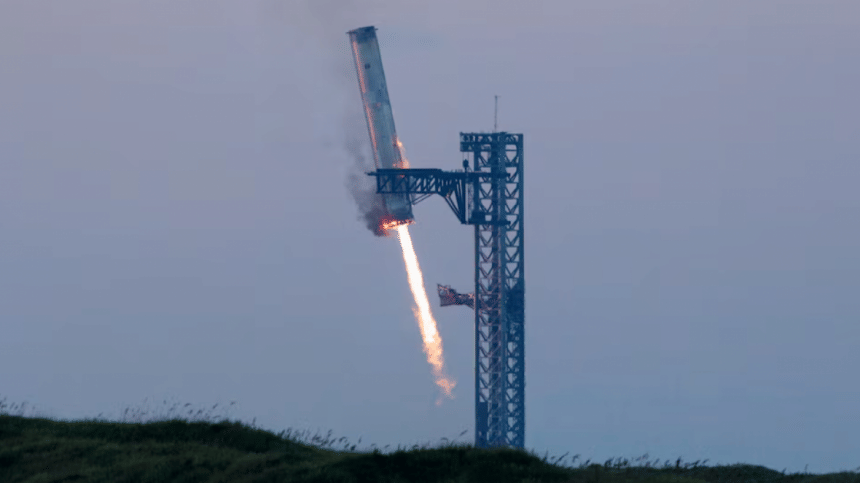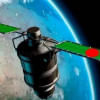SpaceX catches reusable rocket with giant tower arms

SpaceX achieved a major milestone on Sunday by using mechanical arms on its launch tower to catch the first stage of its Starship rocket, marking a key step in developing a fully reusable space vehicle. This feat occurred during the fifth test flight of the Starship system, which aims to transport humans and cargo to the Moon and eventually Mars.
The Super Heavy booster, the lower part of the two-stage Starship system, lifted off from SpaceX's launch site in Boca Chica, Texas, at 7:25 a.m. CT (12:25 GMT). After propelling the Starship second stage rocket toward space, the Super Heavy booster began its descent back to Earth from an altitude of roughly 70 kilometres (40 miles).
Unlike traditional rockets, which typically fall into the ocean after use, SpaceX's goal was to recover and reuse its rockets to cut costs and improve efficiency. To achieve this, the booster relit three of its 33 Raptor engines, slowing its descent toward the same launch site from which it had taken off.
Standing taller than the Statue of Liberty, the launch tower is equipped with two large mechanical arms designed to catch the booster in mid-air. This complex manoeuvre, often referred to as "chopsticks" due to the appearance of the arms, allows SpaceX to bring the rocket safely back without the need for a traditional landing pad.
As the 71-meter (233-foot) booster approached the tower, the mechanical arms successfully grabbed hold of the rocket using tiny protruding bars located beneath the grid fins, which had steered the booster during its descent.
"The tower has caught the rocket!!" SpaceX CEO Elon Musk announced on X, formerly known as Twitter. SpaceX engineers erupted in applause as the company's livestream broadcasted the successful catch.
Meanwhile, the Starship upper stage, which separated from the booster, continued its journey to space. Travelling at 17,000 miles per hour, it reached an altitude of 89 miles before heading for a controlled splashdown in the Indian Ocean near Australia.
After its controlled descent, Starship touched down in the ocean but ultimately toppled onto its side. Moments later, the spacecraft exploded into a fireball. While it remains unclear if the explosion was intentional, the test was considered a success as the ship landed "precisely on target", according to Musk.
This flight follows months of technical refinements and regulatory approvals. The US Federal Aviation Administration had only approved SpaceX's launch license for the test on Saturday, after several delays. The Starship rocket system is part of NASA's Artemis program, which plans to return humans to the Moon in the coming years.

 For all latest news, follow The Daily Star's Google News channel.
For all latest news, follow The Daily Star's Google News channel. 







Comments